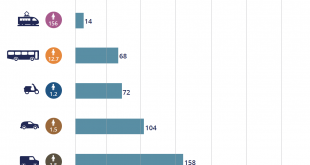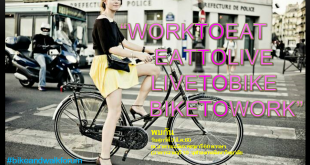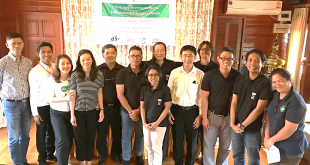On October 5-8, 2012, Thailand Cycling Club (TCC) invited a cycling expert from the European Cyclists’ Federation (ECF), a network organization found in 1983 to promote cycling as a sustainable and healthy means of transportation and recreation by seeking to change attitudes, policies and budget allocations at the European level, to share with Thais how successes in bicycle use promotion were achieved in Europe. This expert, Dr.Bernhard Ensink, Secretary General of the ECF, also had an opportunity to bike on Bangkok streets and shared his views from that experience that Bangkok could not be a ‘bicycle city’, at least for a long time.


He explained that we cannot copy what we had seen on video or from study visit to his country, the Netherlands, or Denmark, and apply that model directly to Thailand because they are in different situations, different environment, different cultures. In the Netherlands and Denmark, works to change transport policies and strategies have been going on for nearly 40 years, thus many of their cities are at ‘Champion’ level. As for Thailand or Bangkok, physically or socially, it can only be in the ‘Starter’ group.
As for a ‘Starter’, the ECF expert said that, a bicycle system we should advocate is a system for short distance travel in neighbourhood, not a cross-city bicycle system that many in Thailand are pushing for. The latter is the system that I myself had advocated and learned to recognize by myself that I went on wrong direction. Now I have turned to focus on building bicycle community in neighbourhood instead. So I feel good that what I am thinking this time is in the right direction as confirmed by person who had direct experience clearly on this matter.
A lesson learned from discussion with Dr.Ensink is that apart from starting in neighbourhoods, we have to focus on three areas: 1) improving physical environment, such as roads and parking facilities, to be bicycle friendly; 2) changing public attitudes, giving bicycle a firm stand in society; and 3) promoting cycling through public relations to inform and encourage members of the public to use bicycle lanes or footpaths that had been improved or newly constructed to create critical mass of bicycle users.
As for physical structures to be constructed, five major factors must be taken into consideration: 1) Safety, which for a ‘Starter’ is the top priority; 2) straightness of the route, to enable cycling with no or as little as possible waste of time, which is also a priority for ‘Starter’ like cities in Thailand; 3) Convenience, that is wherever you stay in a city, you must have access to bicycle lane system that is safe and really working; 4) Comfort, meaning that bicycle lanes must be shady, smooth (no bumping), continuous (not having to jump up and down curbs) and well lighting, for example; and 5) Attractiveness.
For any area or neighbourhood desiring to introduce a bicycle system, three following factors need to be considered first: 1) working first with roads that are easiest to bring about success; 2) traffic have to be calmed down with bumpers or by road narrowing, for instance, without having to emphasize a need for bicycle lane because when motorized vehicles are slowing down, safety for cycling would emerge automatically; and 3) installing bicycle parking facilities at major public places, such as markets, bus stops, train stations, boat piers, BTS stations, schools, business centers and so on to make it most convenient for bicycle users.
Myth: Bicycle structure is about painting lines on the pavement
To promote cycling in everyday life, four strategies should be ensued: 1) select target groups that are ready to change their behaviour from not using to using bicycle for transport, and do not waste time with groups of people that whatever you do they would not change their thought or behaviours; 2) do public relations, making it noisy, so the more members of the public would know about successes and turn to use bicycle; 3) have campaign activities to make people recognize this form of transport and are interested to choose it as their means of transport; and 4) organize bicycle related activities to persuade those who are still reluctant to try to use bicycle on roads in daily life or for touring as experiences show that these people would love and use it or become friends to bicycle users.
If we actively put these lessons learnt from ECF into practice, it can be expected that even though we may not be able to successfully advocate for a bicycle city in the near future, we may be able to use bicycle more in daily life which is an achievement that may sound small but is already big for our communities.
Professor Emeritus Dr. Thongchai Panswad
11th October 2012
 ชมรมจักรยานเพื่อสุขภาพแห่งประเทศไทย ชมรมจักรยานเพื่อสุขภาพแห่งประเทศไทย
ชมรมจักรยานเพื่อสุขภาพแห่งประเทศไทย ชมรมจักรยานเพื่อสุขภาพแห่งประเทศไทย



